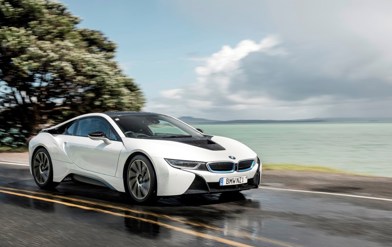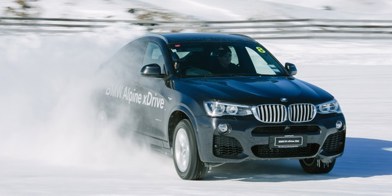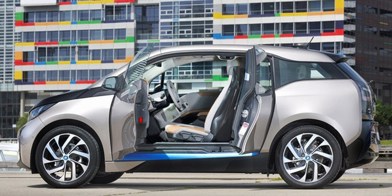Pitch black, sleep-ridden eyes, morning coffees gripped like grenades.
Fly from Auckland to Wellington, and it’ll take you just over an hour. You might be lucky and score a couple of cups of water, and maybe even a nice complimentary biscuit. Crying babies and a potentially gusty landing on terra firma are among the few drawbacks.
Drive from Auckland to Wellington like a brain-addled lunatic, however, and you raise a much longer list of theoretical disasters. And that list doubles if you’re intending to drive back.
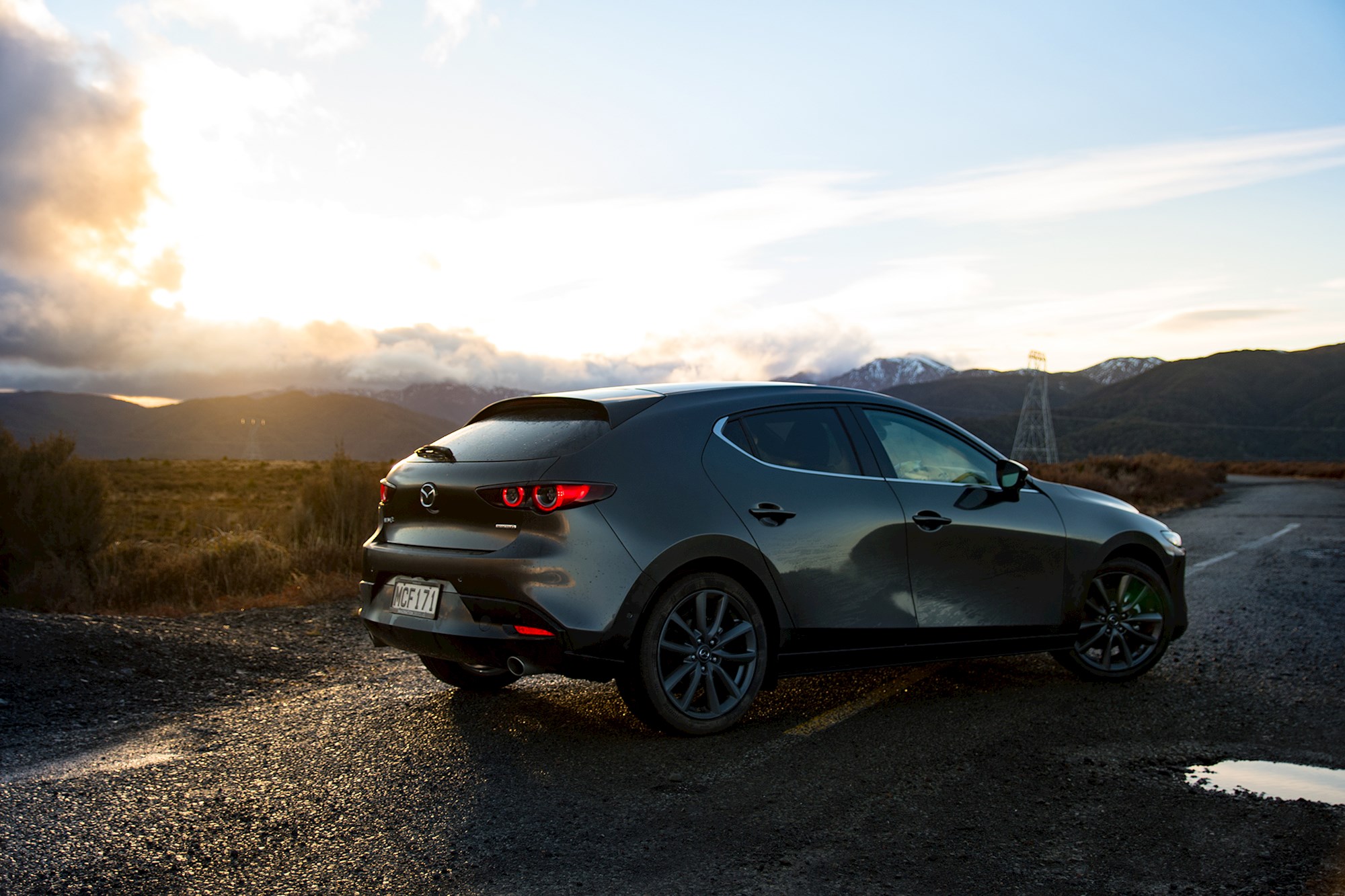
It was a Tuesday when I came across a pair of model cars for sale on an auction site I’m contractually obligated not to name. Most would’ve scoffed at the ‘pick-up only, Wellington’ text halfway through the listing, but as a chronic diecast addict my mind spun into overdrive. Sitting in the driveway was my chief enabler; the new Mazda3 Limited hatch.
At the 3’s national launch, Mazda NZ managing director David Hodge labelled it “Mazda’s best car yet” (to the probable distaste of every RX-7 and MX-5 enthusiast in the country).
It’s not hard to see what fuels his comment, however. This is Mazda’s big, bold attempt to push its brand further upmarket — specifically, in this case, into the realm of cars like the Volkswagen Golf and Mercedes-Benz A-Class.
To do this, Mazda have focused on revolutionary engine tech, cabin quality, and design. And off the bat, the latter has successfully struck up buckets of discussion.
I normally stray from diving fully into the design debate on most cars. Beauty is typically in the eye of the beholder, and that’s certainly true for the Mazda3 hatch — a car that spawned all sorts of reaction from friends and family, from “that’s gorgeous” to “is that the one with the dent in the door?”
Beauty is typically in the eye of the beholder, and that’s certainly true for the Mazda3 hatch. However, while there are plenty of people who have voiced their disapproval of these looks, they’re also objectively, categorically ... wrong.
This is an incredibly stunning looking car, especially in person and especially with optimal light.
In an age of cars coated with busy creases and folds, the Mazda3 seems to bend the laws of light. A subtle bend that forms the car’s key character arc eases up from the front wheel to the back door, before falling away.
Light cascades off the rear quarter like a waterfall, giving the illusion of muscular rear haunches that aren’t actually there. It compliments a sleek, streamlined form — pinched and tucked front end feeding into rounded, arched back.
There are plenty of Mazda RX-Vision concept cues to be seen here, and that’s as good a compliment as any.
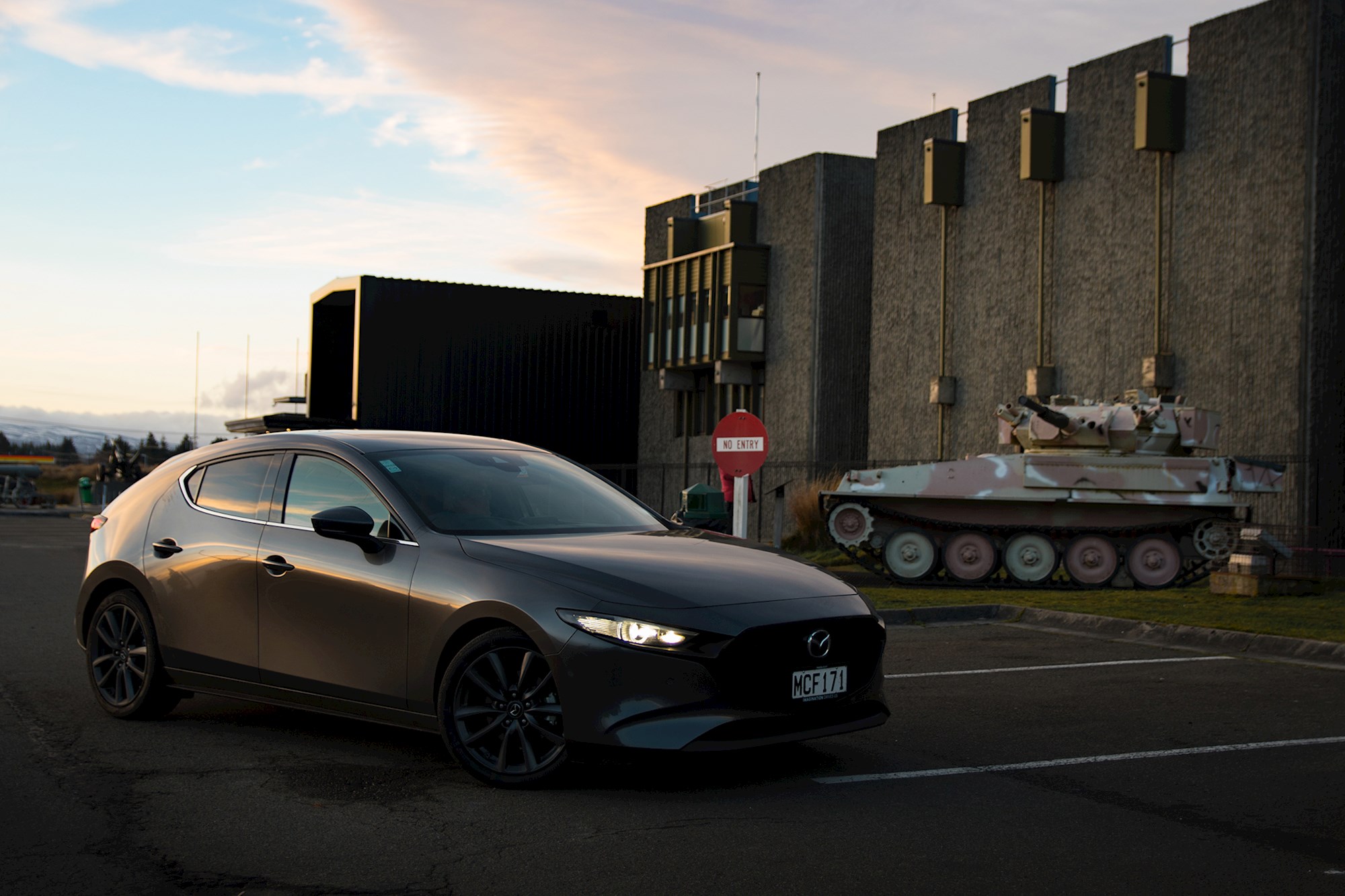
Ironically while so much attention has been focused on the revolutionary SkyActiv-X engines that are coming down the pipe, the balance of the Mazda3 engine line-up are carry-overs from the previous model.
This means entry-level cars get a familiar 2-litre four-cylinder that makes 114kW/200Nm, while the mid-spec GTX and our top-spec Limited get a slightly revised naturally aspirated SkyActiv-G 2.5-litre four-cylinder that makes 139kW/252Nm.
That's a mild bump in output compared to the last 2.5-litre models, supported with the addition of cylinder deactivation — which sees the engine switch from four to three cylinders during low-stress driving in order to save on precious petrol.
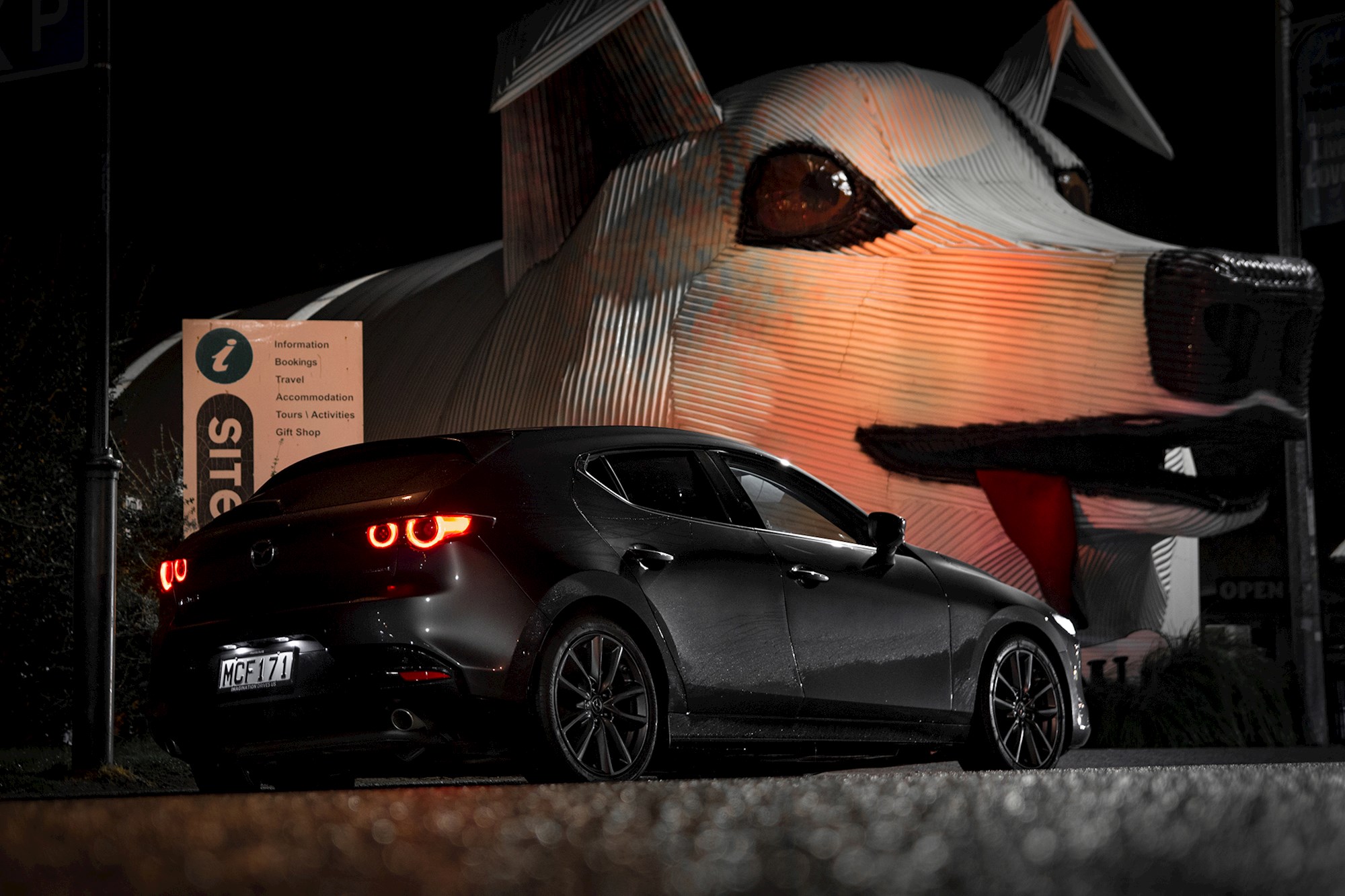
Indeed, fuel saving was one of the biggest considerations for the return trip to Wellington. The less stops we’d have to make, the more likely we’d have a hope of getting home on the same day as we started.
Kick-off was at 3.30am, with my voluntarily present Dad and about 12 hours of podcasts keeping me company. The rough maths placed us at our Lower Hutt destination (yes, Wellington adjacent I know) by around noon — conservative time estimations from Google Maps counteracted by all the threats of potential traffic. All going well, we’d be rugged up at home by 10.00pm.
Shoe-horning a relatively big 2.5-litre engine into a rather small hatch seemed counter-intuitive to me at first, but it didn’t take long for the point to become apparent. This is a strong engine when you need it to be; confidently and smoothly revving out to red-line when summoned.
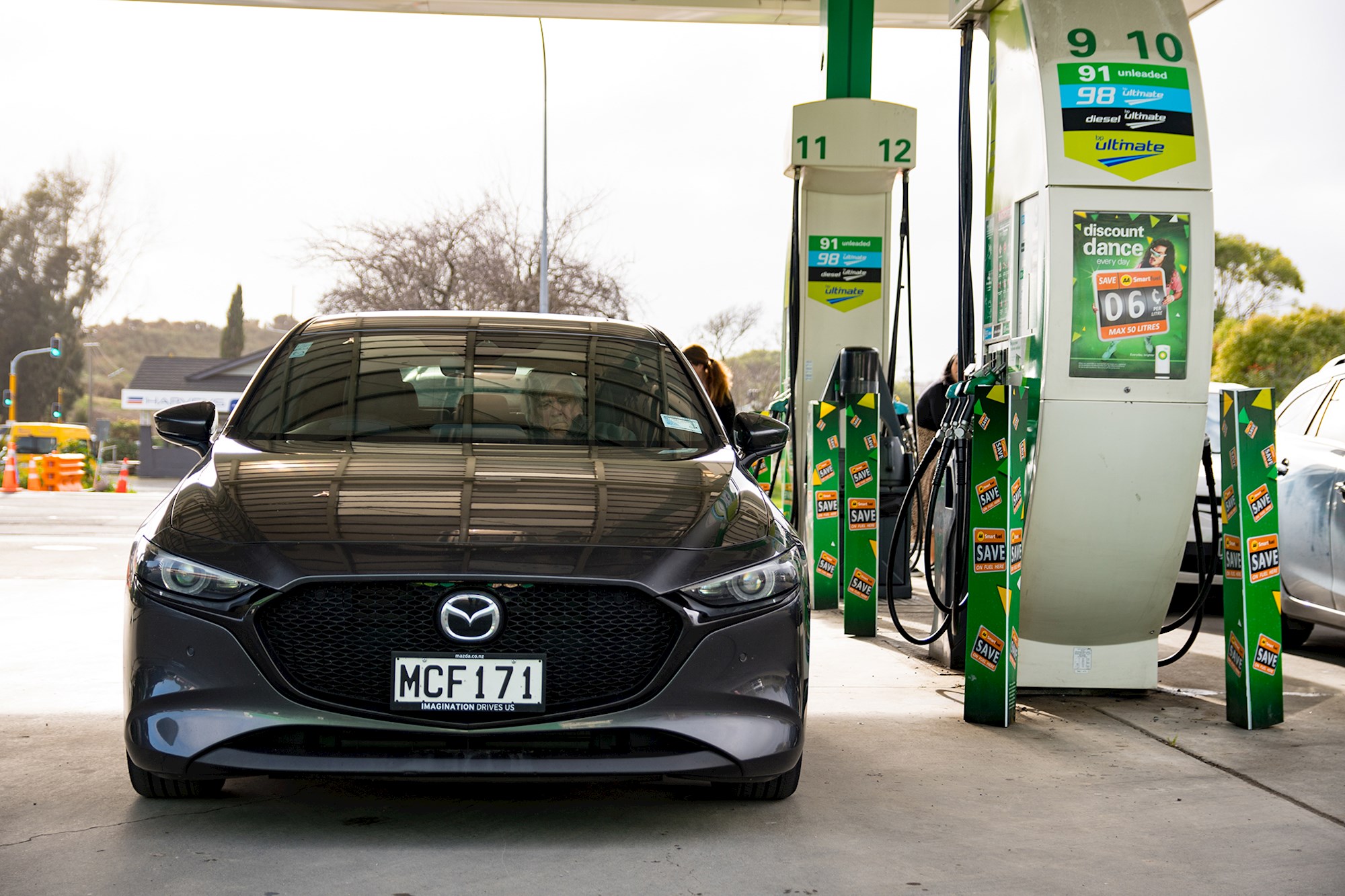
While we didn’t approach the drive with notions of blasting speed limits through the night, having ample power did help for making occasional overtakes and getting up to speed quickly. The 2.5-litre even sounds quite nice; both at idle and when getting pushed.
All up, we ended up averaging 6.5L/100km during the lengthy motorway-heavy drive — a figure that usurps Mazda’s claimed 6.6L/100km average (we later eked out 7.5L/100km in more balanced urban and motorway driving).
The engine is a reasonably proven quantity of course. Perhaps more telling was how the 3 drove.
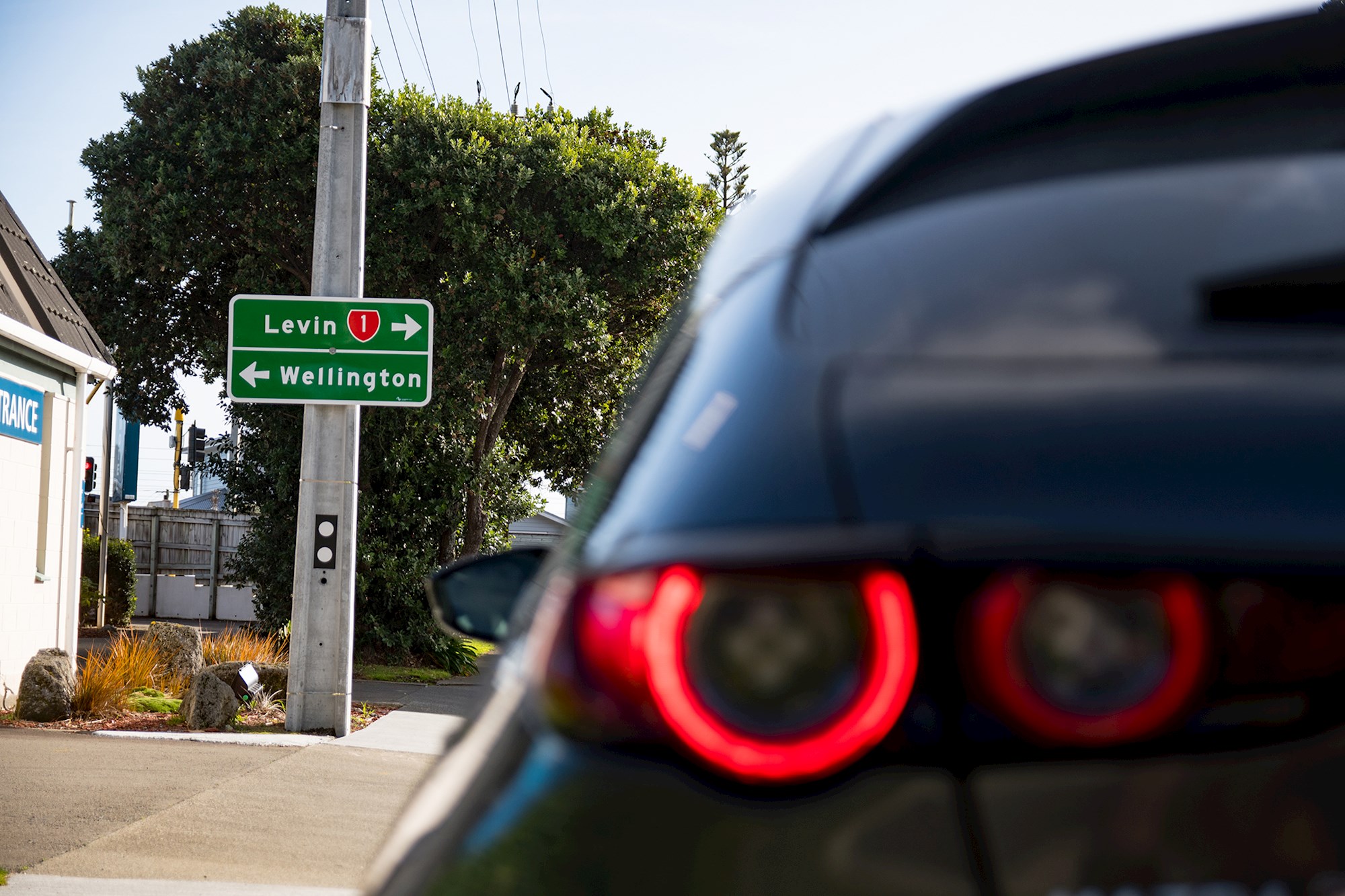
It’s a nameplate known for sharp, pointed handling characteristics. But, from my position, the new Mazda3 brings genuine difference. While a Ford Focus ST-Line is surprisingly rambunctious and spirited in the way it attacks corners, the Mazda is much more muted.
Everything about the way the Mazda3 drives feels like it’s engineered for bigness. This hatch feels like something a segment larger when lobbed into a corner. Steering is firm, but not necessarily because it’s trying to be like a sports car. Body-roll is dealt with, but in a manner that doesn’t shatter teeth and spines.
It's worth noting, too, that the 3 skips a dual-clutch transmission in favour of a 6-speed automatic. This is in part because DCTs are expensive, but it also helps make for a car that operates smoother at low speeds.
It drives, genuinely, like an executive car. A very impressive feat.
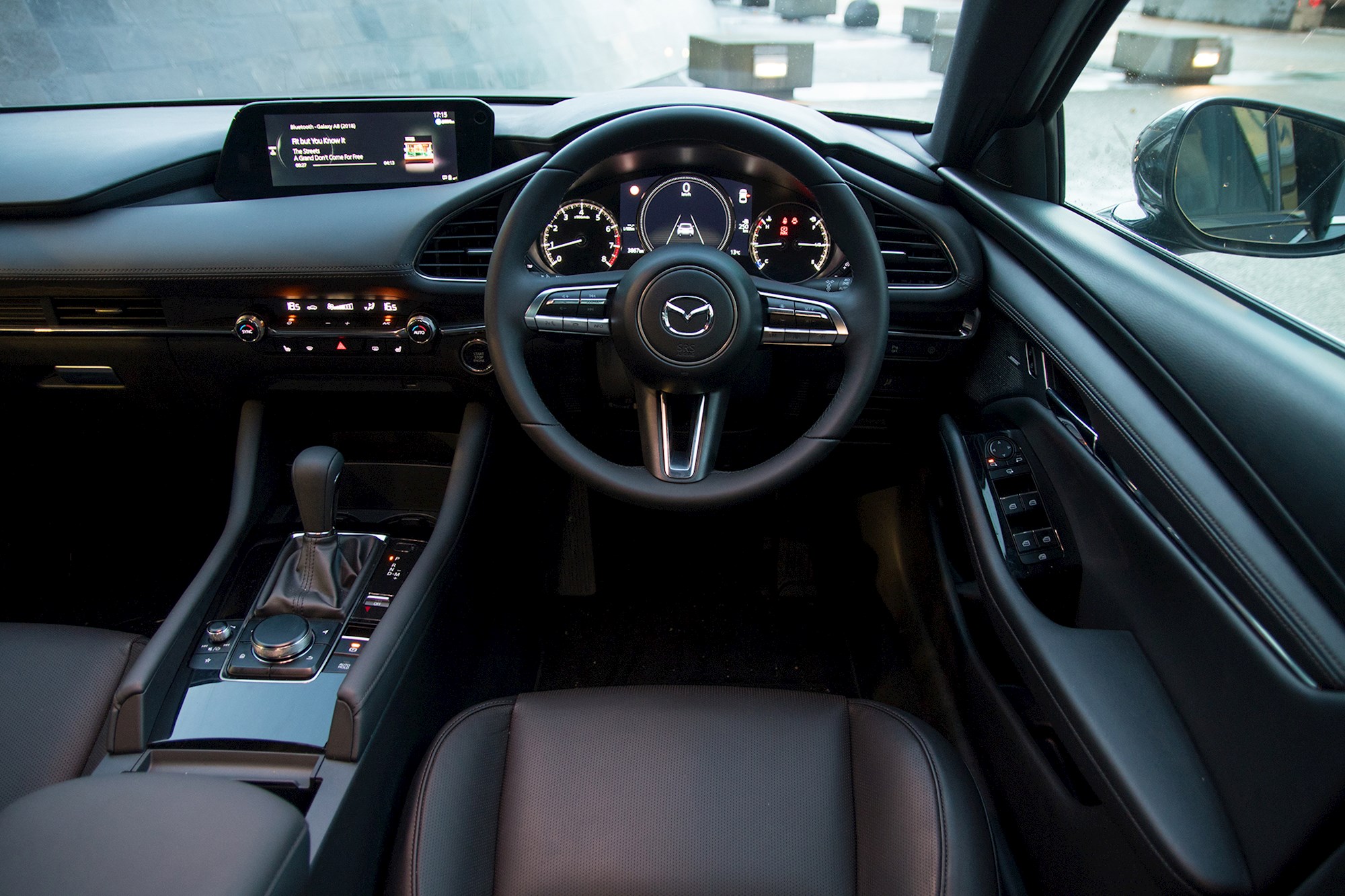
And the glass ceiling continues to shatter with the cabin. Scratchy plastics are few and far between, replaced by soft leathers and metals. Features like radar cruise control and an 8.8-inch touchscreen are standard across the board, while the Limited gets things like heated seats, driver monitoring, and a heads-up display — although strangely, no wireless charging or active lane-keeping.
Space in the front feels ample, thanks to the Mazda3’s relatively wide 1795mm track. Rear leg and headroom is acceptable, but less accommodating than a Focus. And boot space has shrunken a fraction, from 308L to 295L.
Everyone’s making inroads with their interiors, but it’s the little things that push a cabin from being good to being great. Mazda clearly knows this, judging by the attention to detail inside the Limited. Tolerances are tight, every button and dial feels damped and individual, all the stitching along the dash and door cards are executed with precision, and the sumptuous seats are remarkably comfortable.
It’s the most impressive small-car cabin I’ve sat in since the A-Class. In respect to finish and appearance, I’d argue that it’s every bit as good.
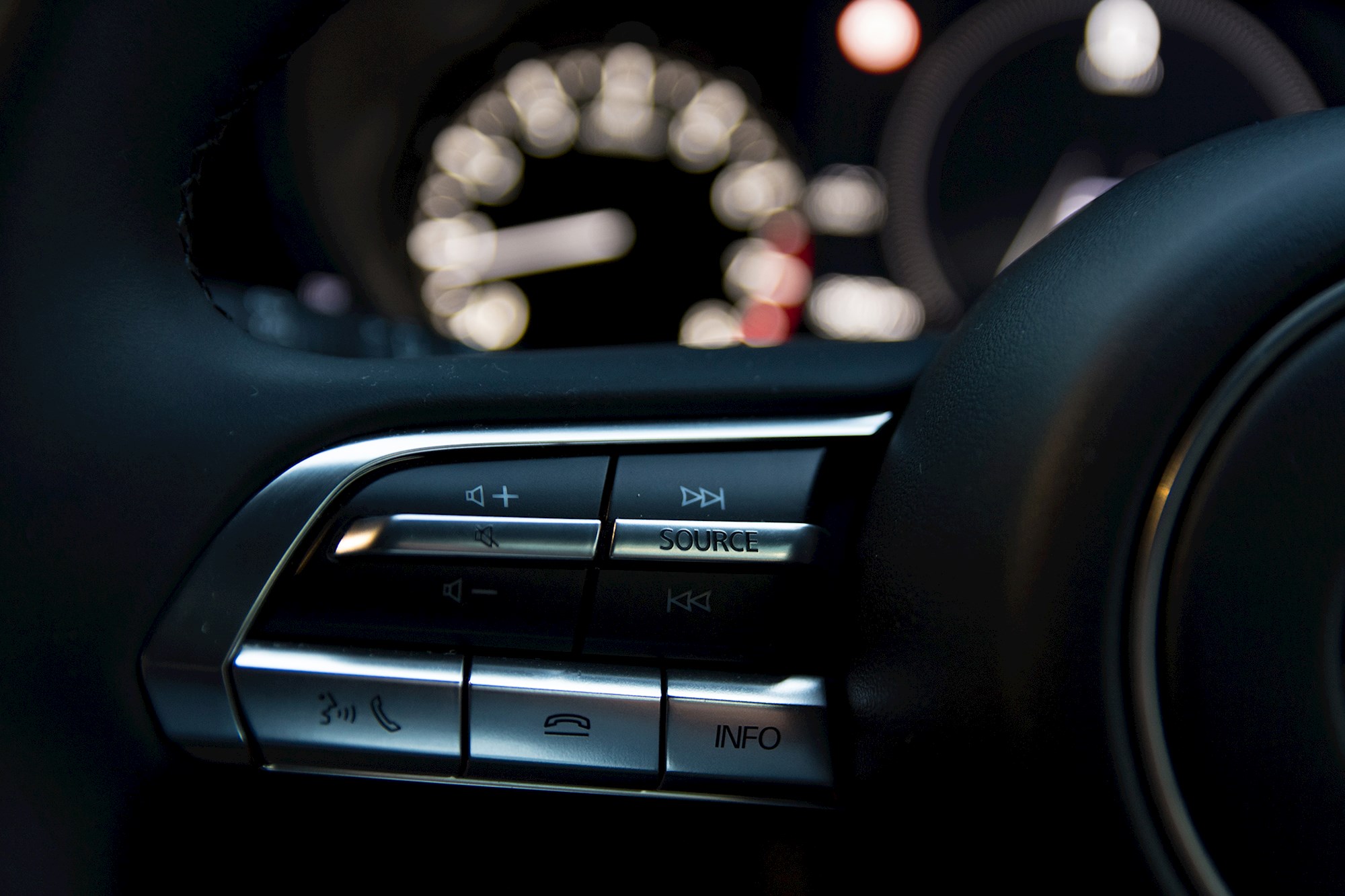
There are some things to note, like the poor black levels in both the main screen and in the digital cluster and the ‘automatic night mode’ that failed to activate in the primary screen during night driving (we cured this by popping a bag of potato chips in front of the screen, before eventually manually selecting night mode in the set-up menu).
The small, tear-drop shape of the Mazda3’s glasshouse also hampers ingress and egress from time to time. Getting in and out can sometimes result in banged shoulders or heads, since the top of the opening is smaller than on other cars in class. Likewise, the beefy C-pillars make rear visibility a struggle.
And, the Mazda3 is another victim of the parasite known as gloss-black plastic. There's a considerable slab of the stuff in the centre console, and after just a few thousand kilometres of driving it had been coated with scratches. By the time we had returned from Wellington, the shiny and vulnerable panel resembled a fully loaded petri dish.
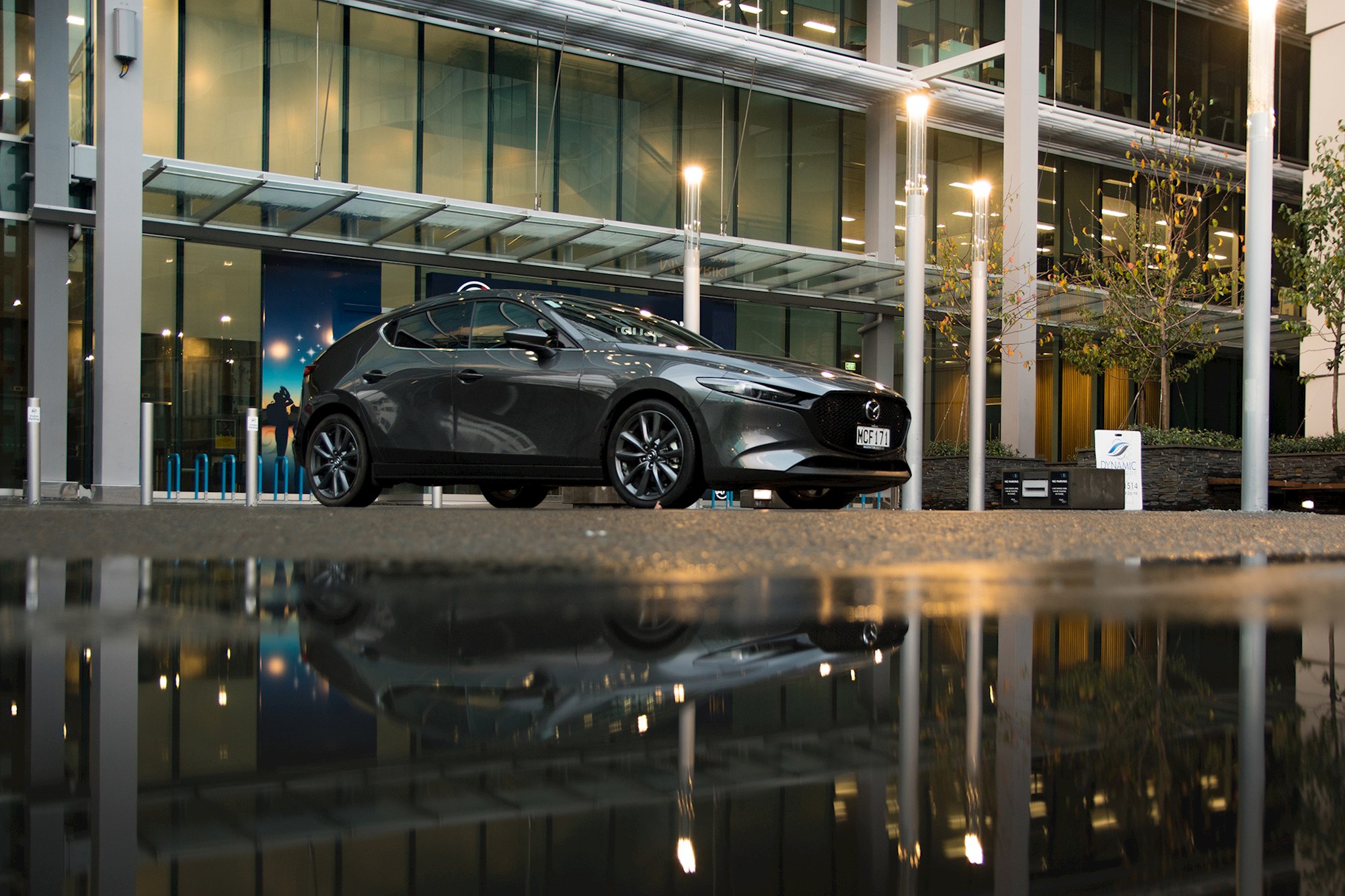
But, none of this could spoil what’s undoubtedly one of the best, most comfortable interiors in any small car. The proof? After returning home at 10.30pm following some 1332km of solo driving and operating on five hours of sleep, I remained awake for another three hours.
I wasn’t tired. Nineteen hours, and I wasn’t tired.
That’s lovely and all, but it all comes at a (particularly literal) price. The Mazda3 has long been a bit more expensive than its key Japanese and Korean rivals. But, with this new model that's been ramped up significantly.
Base price now sits at $36,595 for the GSX, while our Limited tester is priced from $48,795 — a price jump of $3800 and $1300, respectively. The one metric that’s become cheaper is the accessibility of the 2.5-litre engine, which is now available in the $40,795 mid-spec GTX.
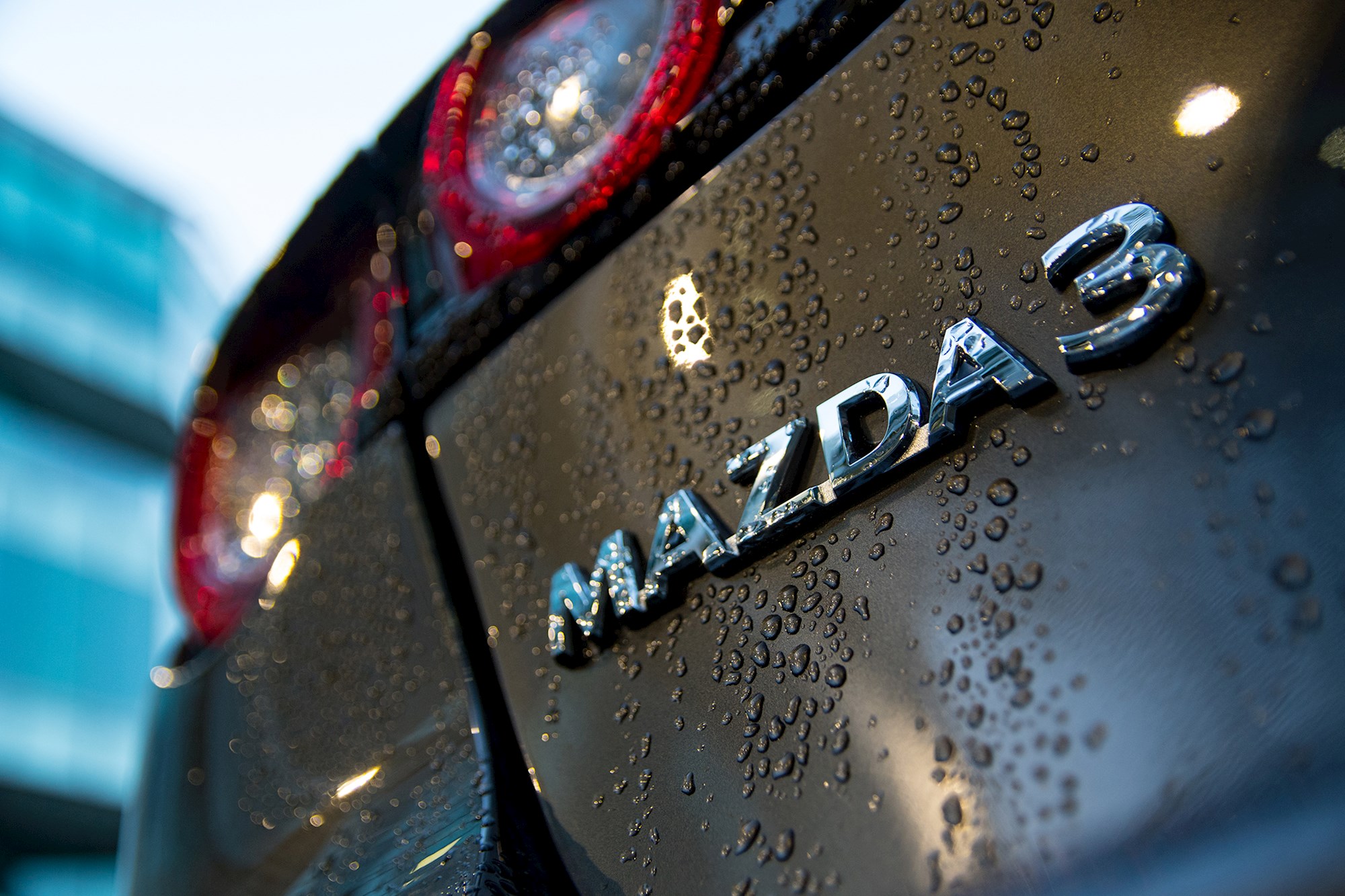
All of that makes it quite pricey when compared to the top-spec $38,990 Toyota Corolla ZR Hybrid and $41,990 Honda Civic Sport Sensing. But, that’s the point … that’s not the comparison you’re meant to be making here.
Mazda’s goal was to go upmarket with their new compact car. And subsequently they’ve produced something that’s very capable of going toe-to-toe with Europe’s best.
Not merely an economy car wrapped in luxury tropes, the Mazda3 is a comprehensive lesson in disruption. The market will undoubtedly gravitate to the mid-spec GTX. But, the Limited is a grand example of Mazda’s capabilities.
2019 Mazda3 Limited hatch
Price: $48,795
Pros: Comfort, incredible cabin quality, suave styling, strong engine
Cons: Pricy, minor infotainment bugs, ingress and rear visibility

























